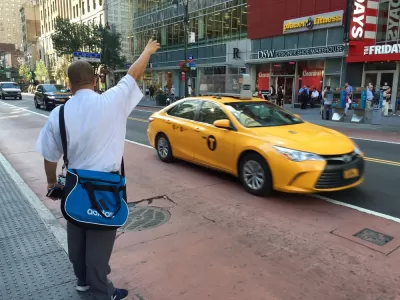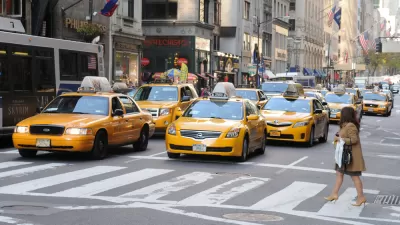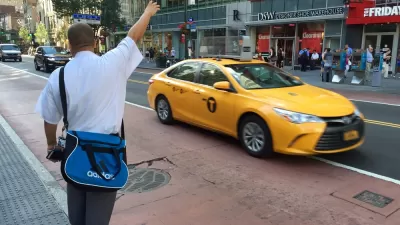Many low- and moderate-income Americans use ride-hailing services to reach essential destinations, but few find the services affordable.

A new study published in the Journal of the American Planning Association (JAPA) reveals the distinct ways that low- and moderate-income households use ride-hailing services. Megan McGlinchey summarizes the study’s results in the Uncovering JAPA blog.
“[The study] found that a higher proportion of their respondents had used ride-hail at least once compared to rates from less targeted studies. Usage was reportedly even more frequent among members of households without a car, reinforcing the notion that ride-hail meets different needs for lower-income and no-car households that may be obscured by general trends.” People without access to cars found ride-hail more important for filling gaps in the existing mobility system.
“Although only 36 percent of zero-car respondents deemed ride-hail to be affordable, they were nonetheless more likely to rely on it for practical trips such as attending medical appointments or grocery shopping.” This signals a need for more affordable ride-hailing services, particularly as “Three-quarters of zero-car respondents cited cost as the main reason that they did not use ride hail more often (compared to 52 percent of respondents with cars).”
The study concludes that the benefits of new mobility modes are distributed unevenly across demographics, and disaggregating data to understand these trends is important to achieving equitable service. “Ride-hail services can be seen as one tool within a city's broader mobility ecosystem, and targeted actions like subsidies can help ensure that this transit method reaches people who would benefit most from it.”
FULL STORY: Expanding the Benefits of Ride-Hail to Lower-Income Households

Alabama: Trump Terminates Settlements for Black Communities Harmed By Raw Sewage
Trump deemed the landmark civil rights agreement “illegal DEI and environmental justice policy.”

Study: Maui’s Plan to Convert Vacation Rentals to Long-Term Housing Could Cause Nearly $1 Billion Economic Loss
The plan would reduce visitor accommodation by 25% resulting in 1,900 jobs lost.

Planetizen Federal Action Tracker
A weekly monitor of how Trump’s orders and actions are impacting planners and planning in America.

Waymo Gets Permission to Map SF’s Market Street
If allowed to operate on the traffic-restricted street, Waymo’s autonomous taxis would have a leg up over ride-hailing competitors — and counter the city’s efforts to grow bike and pedestrian on the thoroughfare.

Parklet Symposium Highlights the Success of Shared Spaces
Parklets got a boost during the Covid-19 pandemic, when the concept was translated to outdoor dining programs that offered restaurants a lifeline during the shutdown.

Federal Homelessness Agency Places Entire Staff on Leave
The U.S. Interagency Council on Homelessness is the only federal agency dedicated to preventing and ending homelessness.
Urban Design for Planners 1: Software Tools
This six-course series explores essential urban design concepts using open source software and equips planners with the tools they need to participate fully in the urban design process.
Planning for Universal Design
Learn the tools for implementing Universal Design in planning regulations.
Caltrans
Smith Gee Studio
Institute for Housing and Urban Development Studies (IHS)
City of Grandview
Harvard GSD Executive Education
Toledo-Lucas County Plan Commissions
Salt Lake City
NYU Wagner Graduate School of Public Service





























